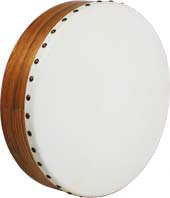Methodology:
I PROVIDE PC
MUSIC SOFTWARE FOR WINDOWS 64 BITS FOR RHYTHM READING WITH REAL
IRISH BODHRAN SOUNDS, WHICH MAKES LEARNING EASIER.
YOU CAN LEARN THE RHYTHMS BY LISTENING TO THEM AS THEY SOUND, YOU
CAN LEARN TO READ THEM BY MUSIC AND PLAY THEM AND YOU CAN PLAY THE
RHYTHMS AT THE SAME TIME AS THE SOFTWARE AND ALSO CHANGE THE SPEED
OF PLAYING.
Tuning way
Playing position
Musical terminology
Different types of beating
Musical reading
Different figures: quintillo, double time, sixteen notes triplet,
quarter notes triplet
Meters: odd meters: 5/8 7/8 11/8 13/8 and zorcico 10/8
Compound meters: 6/8 9/8 12/8
Different styles:
Rells, Jigs, Slip Jigs,Hornpipe, Polka
Paradidles method and its techniques by Daniel Mele
Accent method by C:Wilcoxon
Rhythms to accompany recorded music.
Polyrhythms
Improvisation development

